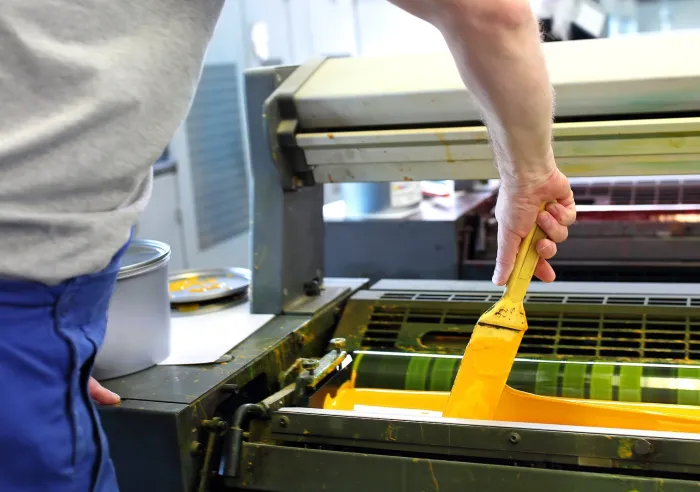When it comes to producing official documents with high quality and precision, offset printing stands out as a preferred method. This printing technique is widely used across various industries due to its ability to produce sharp and clear images and text on a large scale. In this comprehensive guide, we will delve into the nuances of offset printing, particularly its application in the creation of official documents.

The Fundamentals of Offset Printing
Offset printing is a technique where the image is transferred, or ‘offset’, from a plate to a rubber blanket, and then onto the printing surface. This method is particularly effective for high-volume printing jobs because it provides consistent quality and is cost-effective once initial setup is complete. The process involves several stages, including plate creation, ink application, and printing, making it ideal for producing large quantities of professional-grade documents.
Why Choose Offset Printing for Official Documents?
Choosing offset printing for official documents offers numerous advantages. Firstly, it guarantees high-quality prints with vivid colors and fine details, which is crucial for documents that require a professional appearance. Additionally, it is cost-effective for large print runs, making it a practical choice for businesses and government bodies that need to produce documents in bulk.
Applications of Offset Printing in Official Documents
Offset printing is used in a variety of official documents, including legal forms, government publications, and corporate reports. Its ability to handle detailed graphics and large text blocks makes it indispensable for documents that require both aesthetic appeal and readability.
Technical Aspects of Offset Printing
The technology behind offset printing involves several key components, including the printing plate, the ink, and the substrate (the material to be printed on). Each component plays a vital role in ensuring the final product is of the highest quality. The plates used in offset printing are typically made of aluminum, which is durable and provides sharp image reproduction.
Advancements in Offset Printing
Recent advancements in offset printing technology have further enhanced its capabilities. Innovations such as computer-to-plate (CTP) technology have streamlined the printing process, reducing turnaround times and improving accuracy. These advancements ensure that offset printing remains a relevant and effective method for producing official documents in today’s fast-paced business environment.
Challenges and Solutions in Offset Printing
Despite its many advantages, offset printing does have some challenges, such as the initial setup cost and the complexity of the printing process. However, these challenges can be mitigated through careful planning and the use of modern printing technologies. To learn about troubleshooting common issues in offset printing, visit printing issues.
Environmental Considerations
In recent years, there has been an increased focus on the environmental impact of printing processes. Offset printing is no exception. However, many modern offset printing facilities have adopted eco-friendly practices, such as using soy-based inks and recycling waste materials, to minimize their environmental footprint. For more on the differences between offset printing and other methods, check out printing comparison.
The Future of Offset Printing in Official Documents
As technology continues to evolve, offset printing is likely to see further improvements that will enhance its efficiency and sustainability. Innovations such as automated workflows and digital enhancements are set to play a significant role in the future of offset printing, ensuring that it remains a viable option for producing high-quality official documents.
Choosing the Right Printing Partner
When selecting a printing partner for your official documents, it’s important to consider their experience, technology, and commitment to quality. A reputable printing company will have the expertise and equipment necessary to deliver exceptional results, ensuring that your documents meet the highest standards of quality and professionalism. For guidance on selecting the right binding method for your printed materials, you can refer to binding options.
Conclusion
In conclusion, offset printing remains a cornerstone of the printing industry, particularly for the production of official documents. Its ability to deliver high-quality, cost-effective prints makes it an invaluable tool for businesses and government agencies alike. By understanding the intricacies of offset printing, you can make informed decisions that will enhance the quality and effectiveness of your printed materials.

FAQs
What are the benefits of offset printing?
Offset printing offers several benefits, including high-quality prints, cost-effectiveness for large print runs, and the ability to print on a wide range of materials.
How does offset printing differ from digital printing?
While both methods have their advantages, offset printing is generally more cost-effective for large print jobs and offers superior image quality, whereas digital printing is better suited for smaller print runs and offers faster turnaround times.
What types of documents are best suited for offset printing?
Offset printing is ideal for producing a variety of documents, including brochures, magazines, and corporate reports, where high-quality images and text are essential.
This article contains affiliate links. We may earn a commission at no extra cost to you.






